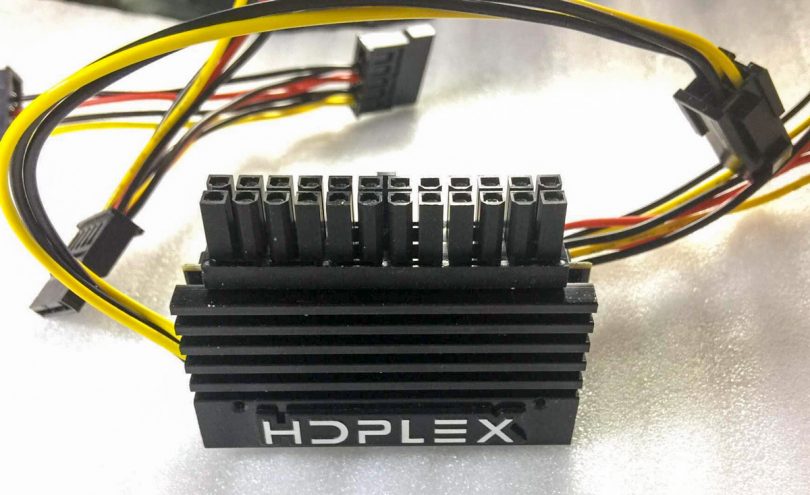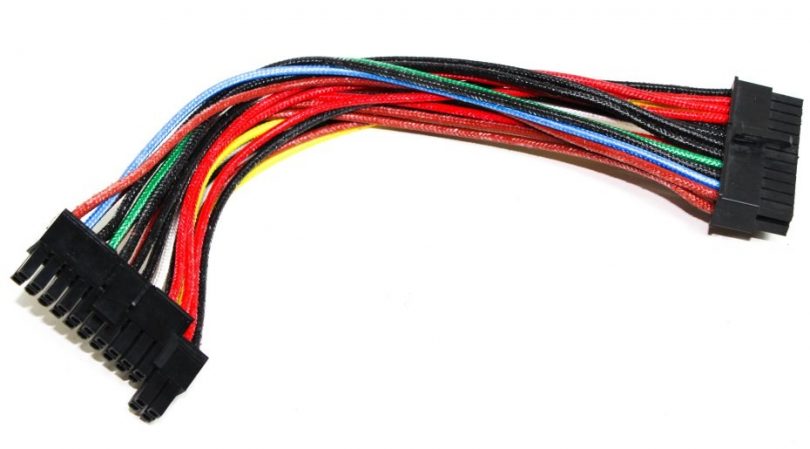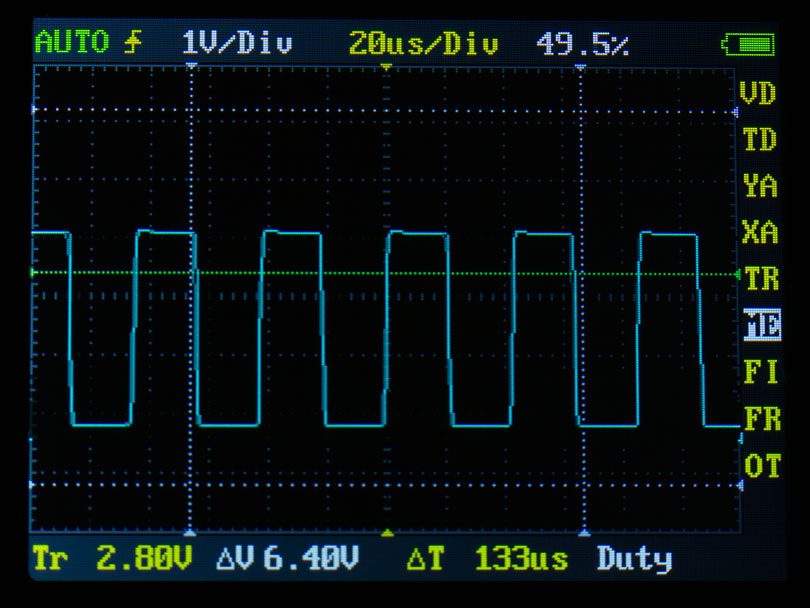As part of a multi-part series, I will be discussing the brave new(ish) world of DC-DC power supplies, their advantages, disadvantages and the technology that powers the smallest of our systems. In the first article, I explain what DC-DC is, why it is a useful product, and run down a few of the more popular brands on the market.
Table of Contents
[mks_separator style=”blank” height=”2″]
[mks_separator style=”blank” height=”2″]
What?
Using a ‘DC-DC PSU’ as your sole power supply just won’t work. For a system to run (generally), you need to take AC (alternating current) from your mains power, and convert it to the DC (direct current) your system needs. The DC-DC portion that we are discussing here takes the single DC input from the aforementioned adapter, to the various voltages (12v, 5v, 3.3v, etc) that your hardware needs to run so that you can add to the thousands of hours you have already clocked up in Minecraft. In this article series, we will discuss both sides of the equation though, as it would be inappropriate to ignore half of the package!
The DC-DC power supply, in its current iteration, is a relatively old piece of tech. They have been around for at least 15 years now, possibly longer (I’ve had no luck finding the launch date of the PicoPSU, or it’s contemporaries!) 12 years now, and have helped shape Small Form Factor computing throughout it’s evolution. The flexibility gained by separating the two power supply roles (AC-DC and DC-DC) has enabled some amazingly creative enthusiast, as well as mass production, designs. In fact it has been the mass production of AC-DC power bricks for laptops, thin clients and other small devices that has enabled us enthusiasts to gain access to cheap, high wattage external AC-DC power supplies, and pushing the tech forward so that internal power supplies can be incredibly power-dense too.
‘Mass’ adoption of the DC-DC idea really started, in the enthusiast world, with the release of the PicoPSU. By replacing all the cables and mess in your system with something not much larger than the ATX 20 or 24 pin socket, you could cut the size of your system in half, in quite a few cases (pun intended). Initial wattage offerings were miniscule, with 80w being the mainstream offering! Building an 80w system in the early days of SFF was challenging, with only low clockspeed Celerons and first generation Atom boards fitting the bill, not exactly high performance gaming or workstation material. As time went on, though, CPUs and GPUs became much more efficient, and we were able to fit more and more powerful systems under this watt limit. While this was happening, the available PicoPSU (and other DC-DC supply) capacities stepped up to 120W, 150w and even 192W! When we started seeing numbers greater than 120W, discrete graphics cards started joining the fray, and true tiny performance systems were born.
Eventually, the PicoPSU form factor (also known as Direct Plug) was joined by modern alternatives, taking the form of a PCB with modular plugs – enabling you to create your own wiring loom inside your chassis, and put the power supply wherever you desired. It also brought along higher wattages, with up to 500W available, if you can find a AC-DC power supply with enough grunt! An added advantage of this form factor is the ability to move it to a location where the airflow is better, creating the ability to over drive some units for more power! (Insert Jeremy Clarkson meme here).
[mks_separator style=”blank” height=”2″]
[mks_separator style=”blank” height=”2″]
Why?
Well, why not? The separated roles of the AC-DC and DC-DC portions of the power supply allows us to place these resulting smaller packages in better places in a system. Better package layout means a better cooled (if designed right), smaller system, which is why we are here! It’s this flexibility that we desire in our drive to go ever more power-dense and quiet. Oh, did I not mention these separated solutions are predominately fanless? Well here’s a treat for you! Aside from the highest power external bricks, all of these products are passively cooled, silent power solutions. That whining 40, 60 or 80mm PSU fan in a regular PSU is just dreadful.
Separate units have the added benefit of allowing the perfect choice between power levels, cost, design, and efficiency. You may already own a laptop power brick powerful enough to power your intended system, thus saving you the outlay. You could even match an eBay DC-DC unit with a quality HDPlex or similar AC-DC unit, it’s up to you. The options are numerous, and compared to the fixed combination of SFX, TFX, ATX, etc power supplies, they offer a plethora of variety.
[mks_separator style=”blank” height=”2″]
[mks_separator style=”blank” height=”2″]
When?
Well, now, silly!
[mks_separator style=”blank” height=”2″]
Who?
There are quite a few brands in the market, from the cheap knockoffs on eBay and Amazon, to G-Unique, HDPlex, Mini-Box and more. Each brand comes with their own limitations, quality levels, pricing and appearance, so the choice is very much yours. HDPlex and G-Unique have a presence on the SFF Network Community Forums, so we’re inclined to recommend them first, as their products have been scrutinised by our passionate community.
[mks_separator style=”blank” height=”2″]
[mks_separator style=”blank” height=”2″]
How? (do they work)
We’ll get into this in the next part of this article series. Gotta keep you coming back!
[mks_separator style=”blank” height=”2″]
That’s it for this brief(ish) introduction to a series about the DC-DC power supplies and the support components. Next up, electrical engineering, dark magic and magic pixies. All this and more on the next episode of The DC-DC Solution.
[mks_separator style=”blank” height=”2″]
Comments go here please.




